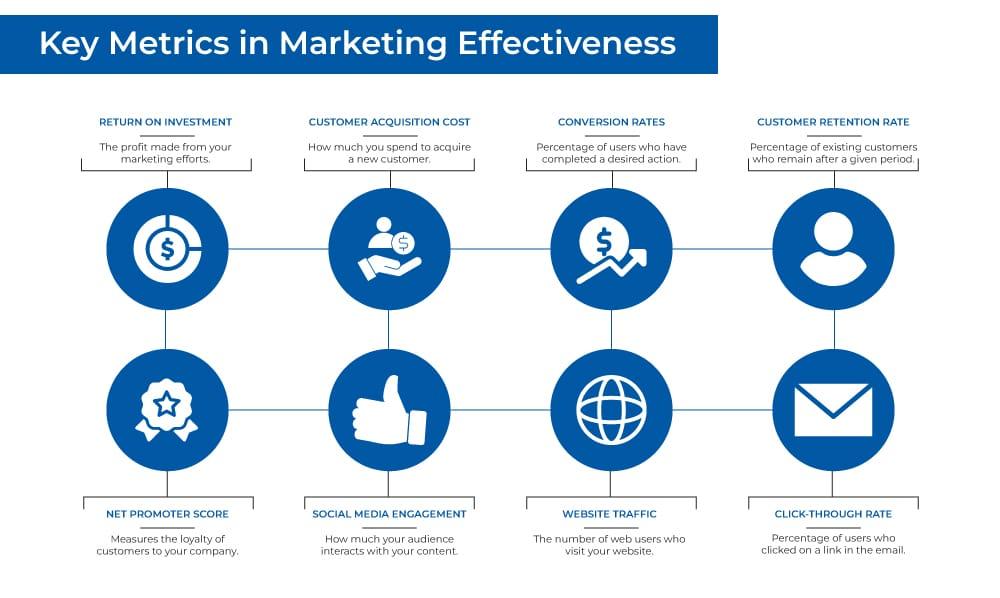One of the most significant mistakes businesses make is trying to target “anyone who wants to buy.” In an ideal world, everyone would be your customer, leading to an endless revenue stream. However, the reality is far from this ideal scenario. Targeting “everyone” is a surefire way to deplete your resources and yield minimal returns. A clearly defined target audience is crucial for a successful sales pipeline. This article will equip you with everything you need to identify your target market effectively.
Understanding Your B2B Target Audience
A B2B target audience is a specific group of businesses or organizations that a company wants to attract and convert into customers. This group comprises key decision-makers, stakeholders, and influencers within these businesses.
Why is understanding your B2B target audience so important? Let’s delve into the reasons:
- Precision in Lead Generation and Marketing: Knowing your target audience allows you to tailor your marketing messages and sales pitches to resonate with their specific needs and pain points.
- Optimized Resource Allocation: You can efficiently allocate your marketing budget and resources by focusing on channels and strategies that effectively reach your target audience.
- Enhanced Product Development: Understanding your audience’s needs enables you to develop products and services that cater to their specific requirements, leading to higher customer satisfaction and loyalty.
- Stronger Customer Relationships: By understanding and addressing the specific needs of your target audience, you can build stronger, long-term relationships with them.
Steps to Identify Your B2B Target Audience
Here are crucial steps to guide you through the process of identifying your target market:
1. Conduct Thorough Industry Market Research
Industry market research is paramount. It provides crucial insights into market dynamics, trends, and the competitive landscape. Understanding your industry’s size, growth potential, and evolving needs allows you to identify profitable segments.
Thorough research also unveils customer behaviors, preferences, and pain points. This data is essential for creating ideal customer profiles and buyer personas, enabling you to tailor your marketing strategies for maximum impact.
2. Segment Your Existing Customer Base
Segmenting your current customers based on shared characteristics is a goldmine of information. By grouping customers with similarities in industry, company size, location, or needs, you can identify patterns and trends.
This segmentation highlights your most profitable and satisfied customer segments. You can then use this information to identify new prospects who mirror these traits.
3. Create Detailed Customer Profiles and Buyer Personas
Detailed customer profiles and buyer personas provide a deep understanding of your ideal customers. These profiles encompass demographics, firmographics, psychographics, and buying behaviors.
For example, a customer profile for a project management software company might include:
- Demographics: Marketing managers, project managers, ages 25-45
- Firmographics: Businesses with 50-200 employees, technology or marketing industries
- Psychographics: Value efficiency, collaboration, and data-driven decision-making
- Buying Behavior: Research solutions online, read reviews, attend webinars
These profiles guide your product development, messaging, and marketing strategies to resonate with your target audience.
4. Define Your Ideal Customer Profile (ICP)
Your ICP is a detailed description of your perfect customer. It goes beyond basic demographics and delves into their specific pain points, motivations, and goals.
A clearly defined ICP helps you focus your efforts on high-value prospects and minimizes time wasted on leads unlikely to convert.
5. Identify and Address Pain Points
Understanding your ideal customer’s pain points is key to positioning your business as a solution provider. What challenges keep them up at night? What obstacles hinder their progress?
Once you understand their pain points, you can tailor your messaging and offerings to address these issues directly, demonstrating empathy and building trust.
6. Develop Targeted Value Propositions
A value proposition explains how your product or service solves a specific problem for your customer. Each customer segment may have unique needs and pain points, so tailor your value proposition accordingly.
A strong value proposition clearly communicates the benefits of your offering and why it’s the best solution for their particular needs.
7. Analyze Your Competitors
A competitor analysis reveals valuable information about your target market. Study your competitor’s strategies, target audience, strengths, and weaknesses.
This analysis helps you identify underserved market niches and differentiate your offerings to gain a competitive advantage.
8. Engage with Your Customers Through Surveys and Interviews
Customer surveys and interviews provide invaluable firsthand information. Use these tools to gather insights into your existing customers’ needs, preferences, and pain points.
This direct feedback is crucial for refining your product offerings, messaging, and targeting strategies, ensuring they remain aligned with your audience’s evolving needs.
9. Align Your Sales and Marketing Teams
Your sales and marketing departments should be on the same page regarding your target market. A shared understanding ensures consistency in your messaging and customer interactions.
Regular communication and feedback between these teams are essential for adapting your target market strategy as market conditions change.
10. Network and Build Relationships
Networking with other businesses in your industry provides valuable market insights and partnership opportunities.
Attend industry events, join online communities, and engage in conversations to stay informed about market trends and connect with potential customers.
Recognizing When to Re-Evaluate Your Target Market
Your target market isn’t static; it evolves with time. Here are some signs it might be time to re-evaluate your target audience:
- Stalled Growth: If your growth has plateaued, your target market might be saturated, or your offerings might not be meeting their evolving needs.
- Declining Customer Satisfaction: An increase in complaints or a decrease in customer satisfaction indicates a misalignment between your offerings and your target market’s expectations.
- Market Shifts: Emerging trends, new technologies, or changing customer preferences signal a need to adapt your target market strategy to stay relevant.
- Increased Competition: A surge in competition targeting the same market segment requires you to re-evaluate your positioning and explore underserved niches.
The Power of Lead Generation Outsourcing
Lead generation outsourcing can be a game-changer for B2B companies, especially growing ones. Outsourced lead generation teams have the expertise, tools, and experience to identify and reach your ideal audience effectively.
They can help you:
- Identify qualified leads: By leveraging data analysis and prospecting techniques, outsourced teams can pinpoint high-value prospects more efficiently.
- Implement targeted campaigns: They utilize various strategies, including content marketing, email marketing, and social media marketing, to reach your target audience.
- Save time and resources: Outsourcing frees up your internal team to focus on core business activities.
Conclusion
Defining your B2B target audience is not a one-time task; it’s an ongoing process that requires constant evaluation and refinement.
By understanding your ideal customer, addressing their pain points, and adapting to market changes, you can position your business for sustainable growth and success.



